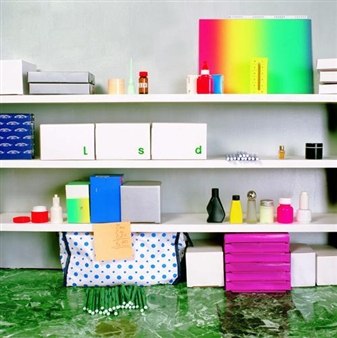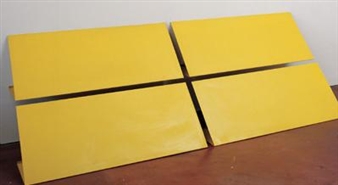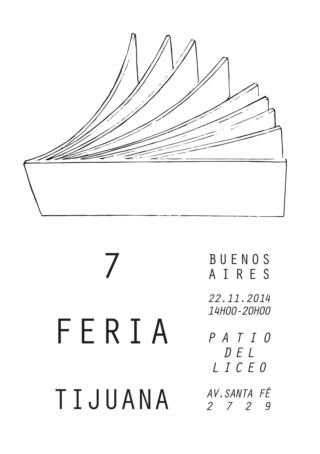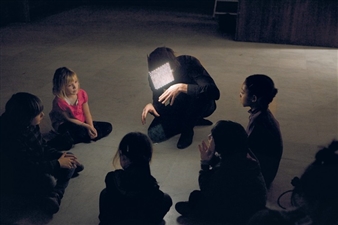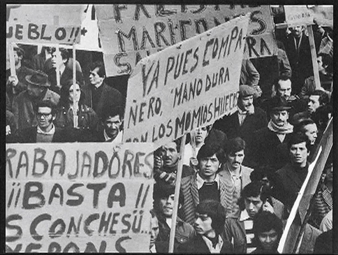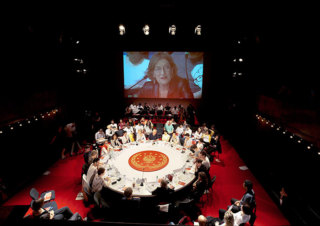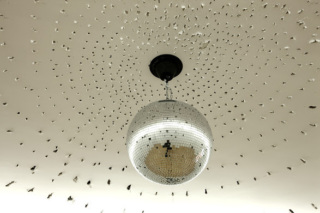The Body of Transgression
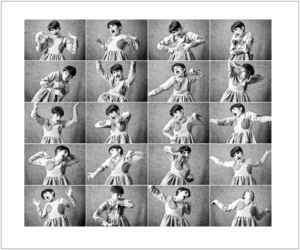
Galeria Ruth Benzacar , Distrito Federal, Buenos Aires, 08/13/2014
ABOUT
Galería Benzacar, August 2014. Flavia Da Rin’s work jars us by taking an unexpected
turn. The scale is smaller; the color is gone and, with it, the loud fantastical
paraphernalia that we know so well and whose memory makes the almost ascetic
concentration of these new scenes so surprising.
It’s true, the visual manifestations are many, but they matter only insofar as they
embody an authentic conceptual shift. For the first time in Da Rin’s work, photography
is referent rather than support. This new succinct and monochromatic language
partakes of modern documentary photography. What’s more, this is the first time that
Da Rin’s work looks to the past. Before, art history made itself as just one more
eradicated code or sign of equal value that postmodern culture combines freely in its
eternal present. We even have reason to suspect that this new series of works by Da
Rin brings to a halt that frenzied battle against obsolescence to which we are
subjected.
Femininity continues to be her privileged theme. But Da Rin’s earlier work addressed
the stereotype of the “young girl,” who is not necessarily young or a girl, but the model
of a citizenPconsumer.* Flavia Da Rin no longer embodies the thousand faces of that
ubiquitous character but, instead, delves into the historical registers of real women:
Lizica Codreanu, Giannina Censi, Mary Wigman... who could well be a single character
that crosses decades and countries. Fiction here is relative insofar as all it does is toy at
bringing together the nuisances of a single process, a single conflict.
The silence that has enshrouded the role of women in the historical avantPgardes is
suspect. If, at center stage, the destruction of “great” art was undertaken by its
legitimate owners, women held the key to the backstage. Undermining the rules of
ballet (the propriety expected of women in the social theater), they threw themselves
bodily not only into futurist machinery and expressionist masks, not only into the
Dadaist absurd and constructivist geometries, but also—like Valeska Gert—into
extreme places that it would take the history of culture decades to understand as the
zero degree of conceptual art or as the crude exhibitionism of the punk movement.
* Ver Flavia Da Rin 2001-2013, ARTA Ediciones, Buenos Aires, 2013, p. 68.
Flavia Da Rin pays tribute to these women in the best sense of the word. It is not a
question of a new version of an existing photograph but rather of embodying once
again an experience. Digital postPproduction which, in her earlier work, was a
language, is here just a tool, a means. Everything that matters takes the shape of
theatrical adventure: the forced poses, the dialogues between the body, the space,
and the objects, the costume designs, the composition of the set.
These situations can be experienced once again because there is a document, a
material trace of the past, because not everything has been absorbed by the culture of
the simulacrum and the hyper machinery of the eternal present. Da Rin’s work has
always been intense and joyful, but this production is even more so. “This is her
masterpiece,” I said to myself yesterday. I then banished that thought so that, in the
future, her images can keep challenging me.
Valeria González
Galería Benzacar, August 2014. Flavia Da Rin’s work jars us by taking an unexpected
turn. The scale is smaller; the color is gone and, with it, the loud fantastical
paraphernalia that we know so well and whose memory makes the almost ascetic
concentration of these new scenes so surprising.
It’s true, the visual manifestations are many, but they matter only insofar as they
embody an authentic conceptual shift. For the first time in Da Rin’s work, photography
is referent rather than support. This new succinct and monochromatic language
partakes of modern documentary photography. What’s more, this is the first time that
Da Rin’s work looks to the past. Before, art history made itself as just one more
eradicated code or sign of equal value that postmodern culture combines freely in its
eternal present. We even have reason to suspect that this new series of works by Da
Rin brings to a halt that frenzied battle against obsolescence to which we are
subjected.
Femininity continues to be her privileged theme. But Da Rin’s earlier work addressed
the stereotype of the “young girl,” who is not necessarily young or a girl, but the model
of a citizenPconsumer.* Flavia Da Rin no longer embodies the thousand faces of that
ubiquitous character but, instead, delves into the historical registers of real women:
Lizica Codreanu, Giannina Censi, Mary Wigman... who could well be a single character
that crosses decades and countries. Fiction here is relative insofar as all it does is toy at
bringing together the nuisances of a single process, a single conflict.
The silence that has enshrouded the role of women in the historical avantPgardes is
suspect. If, at center stage, the destruction of “great” art was undertaken by its
legitimate owners, women held the key to the backstage. Undermining the rules of
ballet (the propriety expected of women in the social theater), they threw themselves
bodily not only into futurist machinery and expressionist masks, not only into the
Dadaist absurd and constructivist geometries, but also—like Valeska Gert—into
extreme places that it would take the history of culture decades to understand as the
zero degree of conceptual art or as the crude exhibitionism of the punk movement.
* Ver Flavia Da Rin 2001-2013, ARTA Ediciones, Buenos Aires, 2013, p. 68.
Flavia Da Rin pays tribute to these women in the best sense of the word. It is not a
question of a new version of an existing photograph but rather of embodying once
again an experience. Digital postPproduction which, in her earlier work, was a
language, is here just a tool, a means. Everything that matters takes the shape of
theatrical adventure: the forced poses, the dialogues between the body, the space,
and the objects, the costume designs, the composition of the set.
These situations can be experienced once again because there is a document, a
material trace of the past, because not everything has been absorbed by the culture of
the simulacrum and the hyper machinery of the eternal present. Da Rin’s work has
always been intense and joyful, but this production is even more so. “This is her
masterpiece,” I said to myself yesterday. I then banished that thought so that, in the
future, her images can keep challenging me.
Valeria González


